
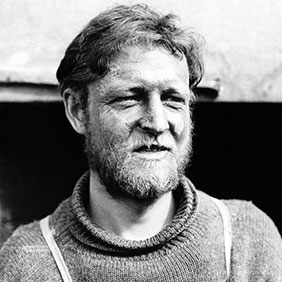
Cecil T Madigan was born in Renmark SA in 1889. In 1911 he went as a Rhodes Scholar to Oxford, but deferred when he was selected by Douglas Mawson as meteorologist for the Australasian Antarctic Expedition, and received the Kings Polar Medal in 1914.
He served in France during WW1 and later returned to Magdalen College at Oxford gaining a doctorate in Science in 1933. He won blues in rowing and boxing. Like Mawson he was a heroic exploration geologist. Whilst introduced to deserts in the Sudan, he adopted Mawson’s interest in the arid zone and made endless surveys of Central Australia and northern South Australia. Madigan died in 1947 in Adelaide.

Spectral analysis of sand particles in the Simpson Desert show that it is geologically 19-24,000 years old, only dating back to the last interglacial. Before that it was grassland and shallow lakes.
This would suggest that the Wangkangurru people who lived in the Simpson, also lived there when it was a much wetter place and adapted as the desert dried out. The desert is now a vast sand ridge desert. The longitudinal sand hills are up to 40 metres in height and can run unbroken for one hundred and twenty kilometres. The colour of the sand runs from almost white through to a deep red depending on the age and oxidisation of the sand.
Embarking on our adventure, we offer convenient pick-ups at all Alice Springs hotels, setting our course southward to Ltyentye Apurte - Santa Theresa Mission. Here, the local church graces us with its captivating murals, masterfully painted by talented Indigenous artists. We will visit Keringke Arts Centre and the craft centre . As we continue our southward journey, we'll encounter spectacular rangelands including the sheer walls of the Rodinga Range. Passing through a dramatic cleft in this ancient range, we find ourselves on a road that leads us into the vast, seemingly frozen expanse of the Simpson Desert. Nestled amidst the awe-inspiring sand dunes of the desert, our first camp awaits, promising a unique and unforgettable experience.
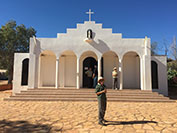
Awaken to the symphony of birdsong and the aroma of freshly brewed coffee. After breaking camp, our journey continues as we head southward to Old Andado Homestead, once the cherished residence of outback legends Mac and Molly Clarke. This homestead has been left exactly as Molly left it and offers a captivating glimpse into the challenges of life in the outback during bygone eras. Spending a couple of hours here, you'll gain valuable insights into the rich history of this remote region. Venturing further south, we make our way across the picturesque Finke River into South Australian. Our path leads us to Mt Dare Station Homestead, now situated within Witjira National Park. Here, while you enjoy a drink at the bar, we’ll refuel in preparation for our exhilarating desert crossing. We head back north, once again crossing the majestic Finke River and find our campsite nestled on the floodplain of the Finke, surrounded by towering coolabah trees, at the picturesque Mayfield Swamp. This tranquil setting offers the perfect backdrop for an unforgettable outback evening.
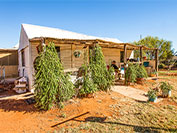
Departing from Old Andado, our journey takes us eastward across a vast, treeless expanse of iron-clad plains shimmering in the haze Our destination is the extraordinary Mac Clarke Acacia Peuce Reserve, a sanctuary for one of the world's rarest treasures, the Waddi Trees, scientifically known as Acacia Peuce. These remarkable trees are found in only three locations globally, making this reserve a true gem for nature enthusiasts. As we follow the path less traveled, we'll weave through the landscape, encountering stunning jump-ups that add a touch of grandeur to our expedition. Our day ends with a campsite on the peaceful floodplain of the Hale River, which rises two hundred kilometers to the north in the Eastern Macdonnell Ranges.
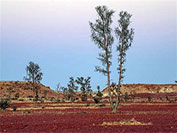
Prepare for a day filled with captivating shifts in the landscape, as the terrain transforms dramatically. Our journey leads us through hilly terrain, with notable landmarks such as Fletcher Hill, named after palaeontologist H.O. Fletcher, one of the scientists on Madigan's team. We walk to the summit of one of 'The Twins,' offering a breathtaking vantage point to behold the panoramic beauty of the surrounding desert. Next, we traverse the picturesque Allitra Tableland and follow a segment of the Colson Track, named after Ted Colton - the first European to cross the Simpson Desert in 1936. The day concludes with a tranquil campsite nestled among the majestic Coolabah trees at Illogwa Creek, offering a serene and natural oasis in the heart of the desert.
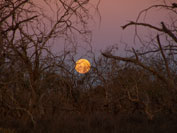
Immerse yourself in the mesmerising world of sandhills, deep within the heart of the desert. The upcoming days promise thrilling adventures, as we navigate our vehicles through challenging terrain, conquering steep and sandy dunes. Ascending over the crest of these dunes, you'll witness a continuous unveiling of new, ever-changing landscapes. Our modern four-wheel drives will effortlessly outpace the camels of Madigan's time, allowing us to pass by several of his historic campsites daily. Our campsite will be nestled within Gidgee groves near Camps 8 and 12. These remarkable trees have a form like “Bonsai on Steroids” creating a truly unforgettable setting.
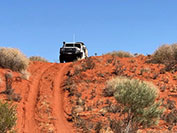
An unexpected delight awaits as a watercourse lined with the Coolabah trees suddenly appears, marking our arrival at the Hay River. Originating near the Plenty Highway, north of the Simpson Desert, the Hay River winds its way southward, its course slowly devoured by the expansive sea of sandhills that define the Simpson Desert. Our journey continues along the riverbed, soon veering eastward, guiding us back into the embrace of the sandhills. Eventually, our day concludes as we find ourselves nestled within yet another charming gidgee grove, the perfect spot for our campsite.

Our next destination is the captivating Eyre Creek, a place that can present itself in two distinct yet equally stunning ways, depending on the season. Depending on the time of your visit, you may encounter Eyre Creek as either a lush oasis teeming with greenery or a mesmerising, arid riverbed marked by cracked, sun-baked grey clay. Both of these faces of Eyre Creek hold their unique allure and beauty. During our expedition, we'll take time to explore the historic ruins of Annandale Station, which was initially established in 1876. From 1896 to 1918, it was under the ownership of the famed Cattle Baron, Sidney Kidman. Today, Annandale is part of Adria Downs, currently owned by the Brook family, current proprietor David Brook's grandfather once managed Annandale. Our journey continues as we head south along the black soil floodplain of Eyre Creek, passing by waterholes flanked by Coolabah trees. We'll make our camp on the iconic QAA Line, a truly memorable spot to conclude the day's adventures.
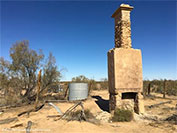
We cross the Nappanerica Dune, affectionately known as 'Big Red,' a moniker coined by modern-day explorer Denis Bartels. This signals the completion of our desert crossing and we continue on to the iconic outback town of Birdsville. Upon our arrival, guests will have the opportunity to relish a well-deserved shower, refreshing themselves for the adventures that await. Birdsville offers a range of options for exploration, including visits to the local bakery, the informative visitors' center, and the world-famous Birdsville Pub, a true outback institution. Our journey continues southward along the legendary Birdsville Track, where we'll traverse the majestic Diamantina River and its vast floodplain, eventually entering the dazzling white sandhills of Pandi Pandi Station. Further on, we'll cross onto Clifton Hills Station, a colossal expanse spanning a staggering 17,000 square kilometres, ranking as the second largest cattle station on Earth. Our day concludes as we set up camp near the solitary grave of the Page Family, located in the vast expanse of the Sturts Stony Desert. Here, under the starry outback sky, we'll enjoy another tranquil evening in the heart of this remarkable landscape.
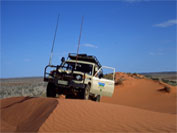
We follow the Birdsville Track south, past Clifton Hills homestead. We stop to look at one of Australia’s rarest trees, the Mount Gason Wattle, we'll make a fascinating stop at Mirra Mitta bore, where the water emerges at almost boiling point, offering a unique natural spectacle. Our journey continues through the scenic Mungerannie Gap, leading us to the remote Mungerannie Pub for a delightful lunch break. After luch we proceed southward through Mulka Station, a region known for the driest recorded rainfall in all of Australia. Our path then takes us through the Naterannie Sandhills, where the dunes of the Strzelecki and Tirari Deserts meet, to Etadunna Station, and thanks to a special arrangement with the station owners, we venture along station tracks to reach the remote and haunting ruins of the Bethesda Lutheran Mission, situated on the serene banks of Coopers Creek at Lake Killalpaninna. Here, you'll have the opportunity to delve into one of the most remarkable stories of European and Aboriginal contact. As the day winds down, we set up camp in the remote heart of Cooper Country.

Continuing our journey southward, we arrive in of Marree, where there is the option of taking a scenic flight over the stunning Lake Eyre. Marree, once a bustling 'Ghan' town, was home to the legendary Afghan Cameleers, a vibrant part of the region's history. During our visit, we'll have the chance to explore some of the historic houses, including the renowned residence of Bejah Dervish, the most famous of the cameleers. Our adventure leads us further south to the town of Copley. We'll enjoy a refreshing shower stop in Lyndhurst. As the day draws to a close, we find ourselves setting up camp on private property, adjacent to a little-known Aboriginal art site that showcases thousands of stone carvings adorning the vibrant red walls of a breathtaking gorge. This hidden gem offers a truly unique and culturally rich experience.
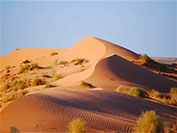
Our journey takes us through the picturesque landscapes of the renowned Flinders Ranges, a region characterised by towering rugged ranges, deep gorges, and ravines that harbour majestic River Red Gums, which have been immortalised in the artistry of Hans Heysen. We travel through the Nepabunna area, providing a glimpse of the spectacular Gammon Ranges. We stop for morning tea at the Ida Warta cultural centre. Continuing our journey southward, we find ourselves at the breathtaking Chambers Gorge, offering a variety of options for exploration. You can choose to embark on a climb to the summit for awe-inspiring panoramic views or opt to wander down into the gorge, where you'll be immersed in the dry riverine environment beneath spectacular River Red Gums. And if you're up for it, why not do both, ensuring you don't miss a moment of the extraordinary scenery.
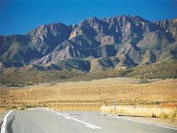
Our journey takes us across the picturesque Flinders Ranges, traversing from the eastern to the western side, with a delightful morning tea stop in the charming town of Blinman, South Australia's highest town. The highlight of the day is our exploration of the fascinating Brachina Gorge interpretive drive. Along this award-winning, self-guided geological trail, we unravel the fascinating narrative of 200 million years of geological history. As we meander beneath the native pines and along the striking red quartzite ridges, the Flinders Ranges unveil their incredible geological heritage. Continuing our southern route, we navigate through station tracks, opening and closing an endless variety of farm gates, eventually reaching our campsite at Warren Gorge. Here, you may have the unique opportunity to catch a glimpse of a colony of the charming yellow-footed rock wallabies, enhancing your connection with the natural world. We camp in a native cypress grove. .
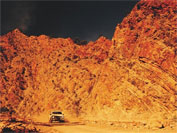
Leaving behind the captivating beauty of Warren Gorge, our journey continues as we pass through the historic township of Quorn, known for its charming streetscape. From there, we descend through Pitchi Ritchi Pass, to the city of Port Augusta at the head of Spencer Gulf. Heading southward, we transition from the outback's red sands into the verdant landscapes of agricultural country. The deep green pastures of the mid-north present an extraordinary contrast to the arid wilderness we've been immersed in for the past two weeks. We share our final lunch on the docks at Port Wakefield. Our adventure culminates as we arrive in Adelaide early in the afternoon, marking the end of an unforgettable journey through diverse and awe-inspiring landscapes.
